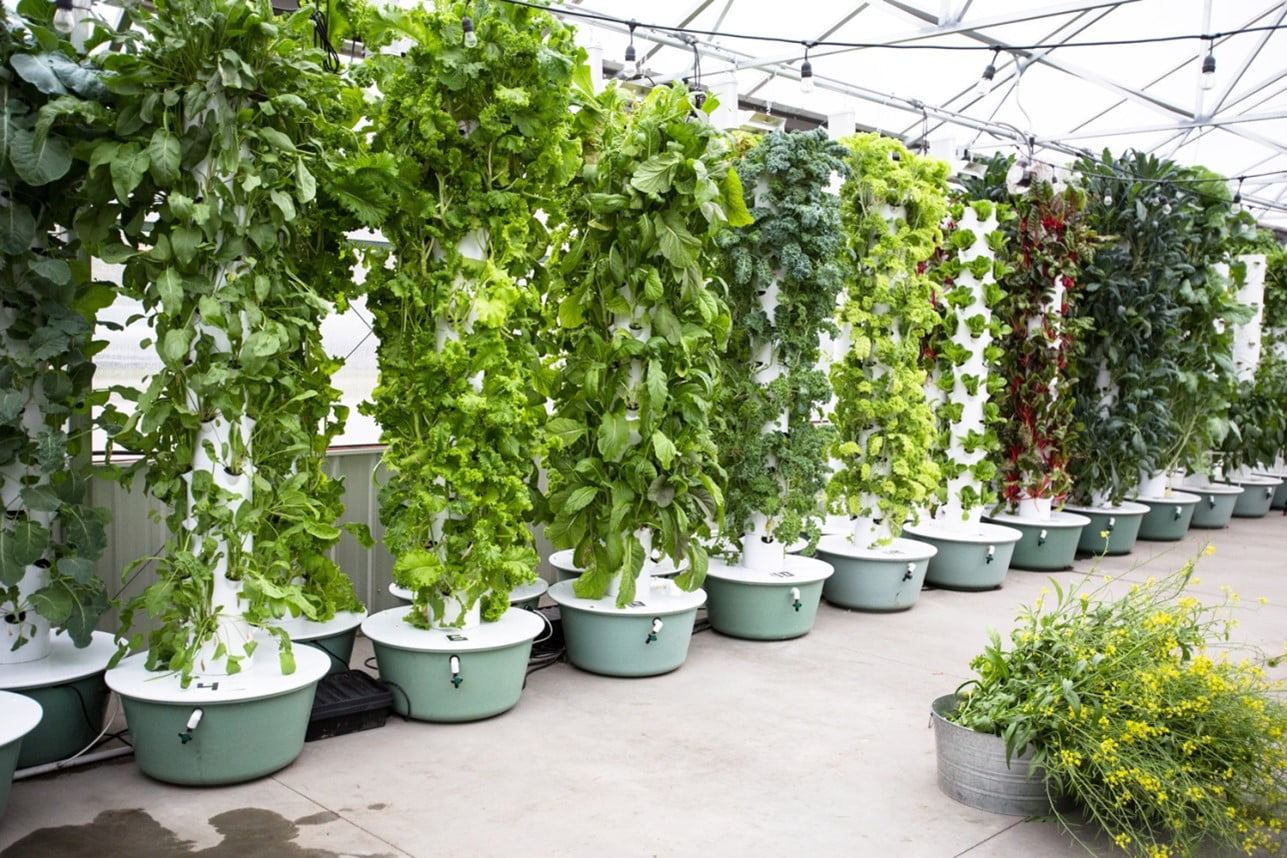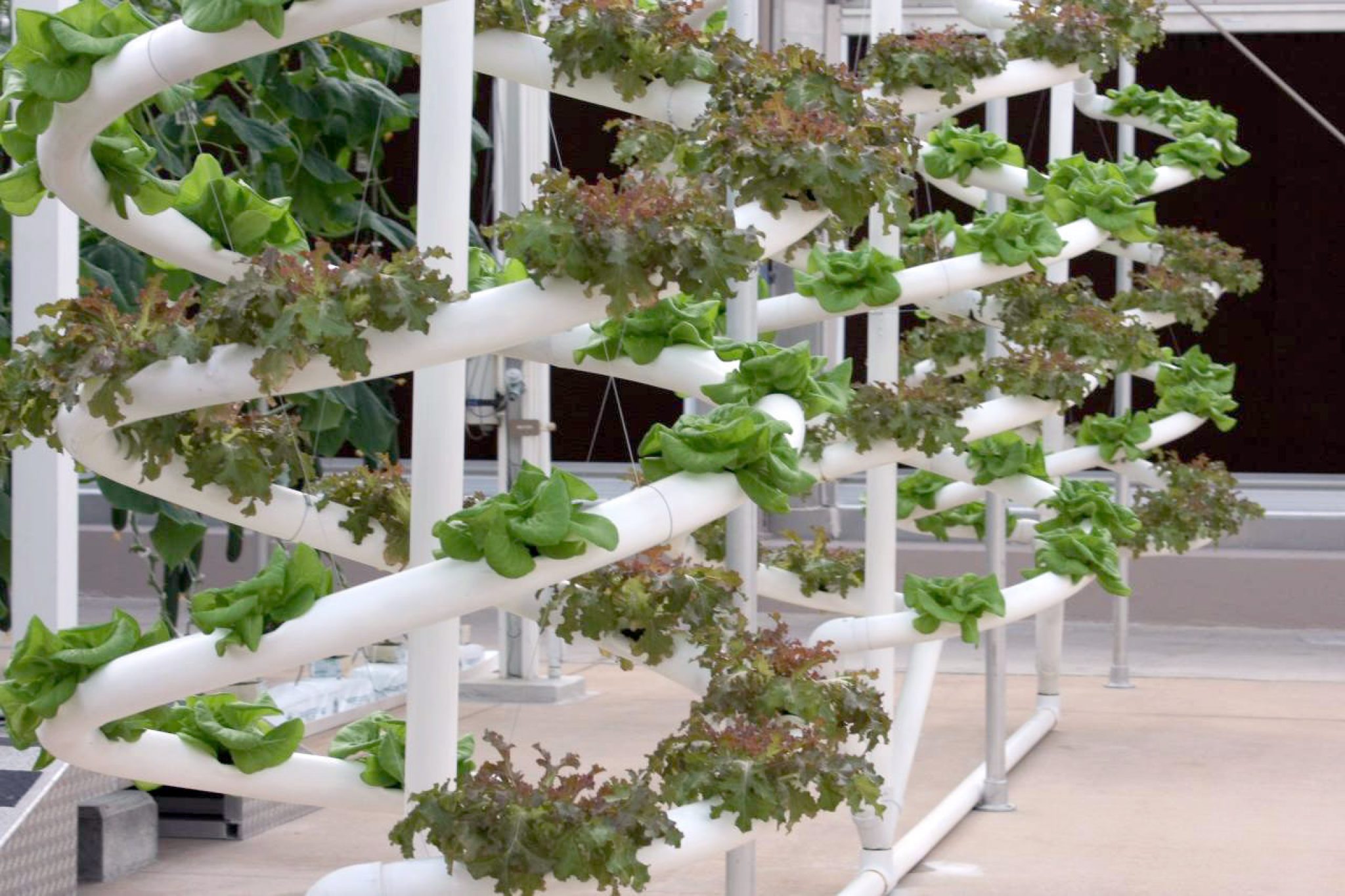Home hydroponic systems offer a revolutionary way to grow plants indoors, providing a controlled environment that optimizes growth and yield. In this comprehensive guide, we’ll delve into the world of home hydroponics, exploring its benefits, components, setup process, plant selection, troubleshooting, and advanced techniques.
Embark on a journey of discovery as we unlock the secrets of hydroponic gardening, empowering you to cultivate thriving plants in the comfort of your own home.
Introduction to Home Hydroponic Systems
Hydroponics is a method of growing plants without soil, using water and nutrient-rich solutions instead. It offers several benefits for home gardening, including:
- Increased yield:Hydroponic systems provide optimal growing conditions, leading to higher yields compared to traditional soil-based gardening.
- Faster growth:Plants grown hydroponically have access to nutrients and water 24/7, resulting in faster growth rates.
- Water conservation:Hydroponic systems use significantly less water than soil-based gardening, as the water is recirculated and reused.
- Pest and disease reduction:The controlled environment of hydroponic systems reduces the risk of pests and diseases.
- Space efficiency:Hydroponic systems can be set up vertically, making them ideal for small spaces or urban gardening.
Types of Home Hydroponic Systems
There are several types of home hydroponic systems available, each with its advantages and disadvantages:
- Deep Water Culture (DWC):Plants are suspended in a nutrient-rich solution with their roots submerged.
- Nutrient Film Technique (NFT):A thin film of nutrient solution flows over the roots of plants, providing constant access to nutrients and oxygen.
- Ebb and Flow:The growing medium is periodically flooded with nutrient solution and then drained, allowing for oxygenation of the roots.
- Aeroponics:Plants are suspended in the air and their roots are misted with nutrient solution.
Components of a Home Hydroponic System

Building a home hydroponic system requires an understanding of its essential components and their functions. Each component plays a crucial role in providing optimal conditions for plant growth and nutrient delivery.
The following components are essential for a functional home hydroponic system:
Reservoir
- Stores the nutrient-rich water solution.
- Provides a stable environment for plant roots.
- Protects the solution from light and contamination.
Water Pump
- Circulates the nutrient solution throughout the system.
- Ensures even distribution of nutrients to all plants.
- Prevents water stagnation and root rot.
Grow Trays
- Support the plants and hold the growing medium.
- Allow roots to extend and absorb nutrients.
- Provide aeration and drainage for healthy root development.
Growing Medium
- Provides physical support for plant roots.
- Facilitates nutrient uptake and water retention.
- Examples include perlite, vermiculite, and rockwool.
Lighting System, Home hydroponic system
- Provides artificial light for plant growth in indoor systems.
- Mimics natural sunlight, promoting photosynthesis and plant development.
- Consider factors such as light intensity, spectrum, and duration.
Nutrient Solution
- Contains essential nutrients for plant growth.
- Must be balanced and adjusted according to plant species and growth stage.
- Regular monitoring and adjustment are necessary.
Air Pump and Airstones
- Oxygenates the nutrient solution.
- Promotes root growth and prevents anaerobic conditions.
- Airstones create fine bubbles that increase oxygen absorption.
How to Set Up a Home Hydroponic System
Setting up a home hydroponic system is a rewarding experience that allows you to grow healthy and nutritious plants indoors. Follow these steps to get started:
Choosing a Suitable Location
Select a well-lit area with access to natural or artificial light. Ensure the space is well-ventilated and has a stable temperature range. Avoid areas with drafts or extreme temperature fluctuations.
Assembling the System
Assemble the hydroponic system according to the manufacturer’s instructions. This typically involves connecting the grow bed, reservoir, and pump. Install the grow medium in the grow bed and fill the reservoir with water.
Preparing the Nutrient Solution
Mix the hydroponic nutrient solution according to the manufacturer’s instructions. The solution provides essential nutrients for plant growth. Adjust the pH and electrical conductivity (EC) of the solution to the recommended levels using a pH meter and EC meter.
Plant Selection and Care
Selecting the right plants and providing proper care are crucial for a thriving home hydroponic system. Consider factors such as:
- Growth habit:Choose plants suitable for the size and shape of your system, considering their root structure and space requirements.
- Nutrient requirements:Match plant species with the nutrient profile of your hydroponic solution.
- Light intensity:Ensure your system provides sufficient light for the plants’ growth and development.
Once your plants are selected, follow these care tips:
Nutrient Management
Regularly monitor nutrient levels and adjust as needed. Follow the recommended nutrient schedule for your plants and water quality.
Lighting
Provide plants with 12-16 hours of light daily. Use grow lights with the appropriate spectrum and intensity for your plants’ needs.
Water Quality
Maintain optimal water quality by monitoring pH, dissolved oxygen, and temperature. Regularly replace or treat water as necessary.
Troubleshooting Common Problems: Home Hydroponic System

Identifying and resolving common issues in a home hydroponic system is crucial for its efficient operation and plant health. Here are some common problems and troubleshooting tips:
Nutrient Imbalances
Nutrient imbalances occur when the concentration of nutrients in the hydroponic solution is not optimal for plant growth. This can lead to nutrient deficiencies or toxicities, affecting plant growth and health.
Nutrient deficiency
Symptoms include stunted growth, yellowing leaves, and poor root development. Adjust the nutrient solution according to the specific requirements of the plants being grown.
For those who are enthusiastic about home hydroponic systems, the concept of industrial aquaponics might be an intriguing next step. Industrial aquaponics operates on a larger scale, combining aquaculture (fish farming) with hydroponics (plant cultivation in water). While home hydroponics provides a satisfying and manageable hobby, industrial aquaponics offers commercial-level production of both fish and vegetables, providing a sustainable and efficient food source.
Nutrient toxicity
Symptoms include leaf burn, wilting, and stunted growth. Reduce the nutrient concentration in the solution and flush the system with fresh water.
pH Imbalances
The pH level of the hydroponic solution affects nutrient availability and plant growth. Optimal pH levels vary depending on the plant species.
pH too high (alkaline)
Symptoms include yellowing leaves, stunted growth, and poor nutrient uptake. Adjust the pH level by adding a pH-lowering agent, such as nitric acid or phosphoric acid.
pH too low (acidic)
Symptoms include wilting, leaf burn, and nutrient deficiencies. Adjust the pH level by adding a pH-raising agent, such as potassium hydroxide or sodium hydroxide.
Root Rot
Root rot is a common problem in hydroponic systems caused by excessive moisture and poor aeration.
Identify the source of excess moisture
Check for leaks in the system or overwatering.
Improve aeration
Use an air pump and airstones to increase oxygen levels in the solution.
Remove infected roots
Trim away any brown or mushy roots and disinfect the remaining roots with a hydrogen peroxide solution.
Algal Growth
Algae can thrive in hydroponic systems due to the presence of light and nutrients.
Control light exposure
Reduce the amount of light reaching the system by covering it or using a shade cloth.
Adjust nutrient levels
High nutrient levels can promote algal growth. Reduce the nutrient concentration and ensure the pH is balanced.
Use algaecides
As a last resort, consider using an algaecide specifically designed for hydroponic systems.
Advanced Techniques for Home Hydroponic Systems
To optimize the performance of your home hydroponic system, consider employing advanced techniques such as automation, nutrient management strategies, and plant training techniques.
Automated Systems
Automating your hydroponic system can significantly reduce maintenance and improve plant growth by:
- Monitoring and adjusting pH and nutrient levels
- Controlling lighting and water flow
- Providing remote access and data logging
Nutrient Management Strategies
Precise nutrient management is crucial for plant health. Advanced techniques include:
- Using specialized nutrient formulations for different plant species
- Implementing continuous nutrient monitoring and adjustment
- Employing fertigation (applying nutrients through irrigation water)
Plant Training Techniques
Plant training techniques optimize plant growth and space utilization. Consider:
- Trellising or staking plants to support their weight
- Pruning and defoliation to improve airflow and light penetration
- Utilizing hydroponic grow bags or vertical systems for efficient space utilization
Conclusion

Home hydroponic systems offer a unique and rewarding way to grow plants indoors. They provide a controlled environment that can be tailored to meet the specific needs of your plants, resulting in healthier, more productive plants. In this article, we have covered the basics of home hydroponic systems, including the components, setup, plant selection, and troubleshooting.
We hope that this information has been helpful and that you are now ready to start your own home hydroponic system.
For further reading and resources, we recommend the following:
- Hydroponics for the Home: A Step-by-Step Guide to Growing Plants Without Soil by Howard Resh
- The Complete Guide to Hydroponics: A Step-by-Step Guide to Growing Plants Without Soil by Rick Domantas
- Hydroponics Central: https://hydroponicscentral.com/
- Home Hydroponics: https://www.homehydroponics.com/
Last Point

As we conclude our exploration of home hydroponic systems, remember that the journey doesn’t end here. Continue to experiment, learn, and refine your techniques to achieve optimal plant growth. Embrace the joy of indoor gardening and witness the transformative power of hydroponics firsthand.
For further inspiration and knowledge, delve into the recommended resources and connect with fellow hydroponic enthusiasts. Together, let’s unlock the full potential of home hydroponics and cultivate a thriving indoor oasis.
FAQ Section
What are the benefits of home hydroponic systems?
Home hydroponic systems offer numerous benefits, including faster plant growth, higher yields, water conservation, space efficiency, and the ability to grow plants year-round indoors.
What are the different types of home hydroponic systems available?
There are several types of home hydroponic systems, including deep water culture (DWC), nutrient film technique (NFT), aeroponics, and ebb and flow systems. Each system has its own advantages and disadvantages, so it’s important to choose the one that best suits your needs.
How do I set up a home hydroponic system?
Setting up a home hydroponic system is relatively easy. You will need to gather the necessary components, including a grow tank, nutrient solution, grow medium, and lighting. Once you have everything you need, you can follow the step-by-step instructions in the guide to set up your system.
What plants can I grow in a home hydroponic system?
You can grow a wide variety of plants in a home hydroponic system, including leafy greens, herbs, tomatoes, peppers, and strawberries. When selecting plants, it is important to consider factors such as plant size, nutrient requirements, and light requirements.
How do I troubleshoot common problems with my home hydroponic system?
There are a number of common problems that can occur with home hydroponic systems, including nutrient deficiencies, pH imbalances, and root rot. The guide provides troubleshooting tips and solutions for each of these problems.
